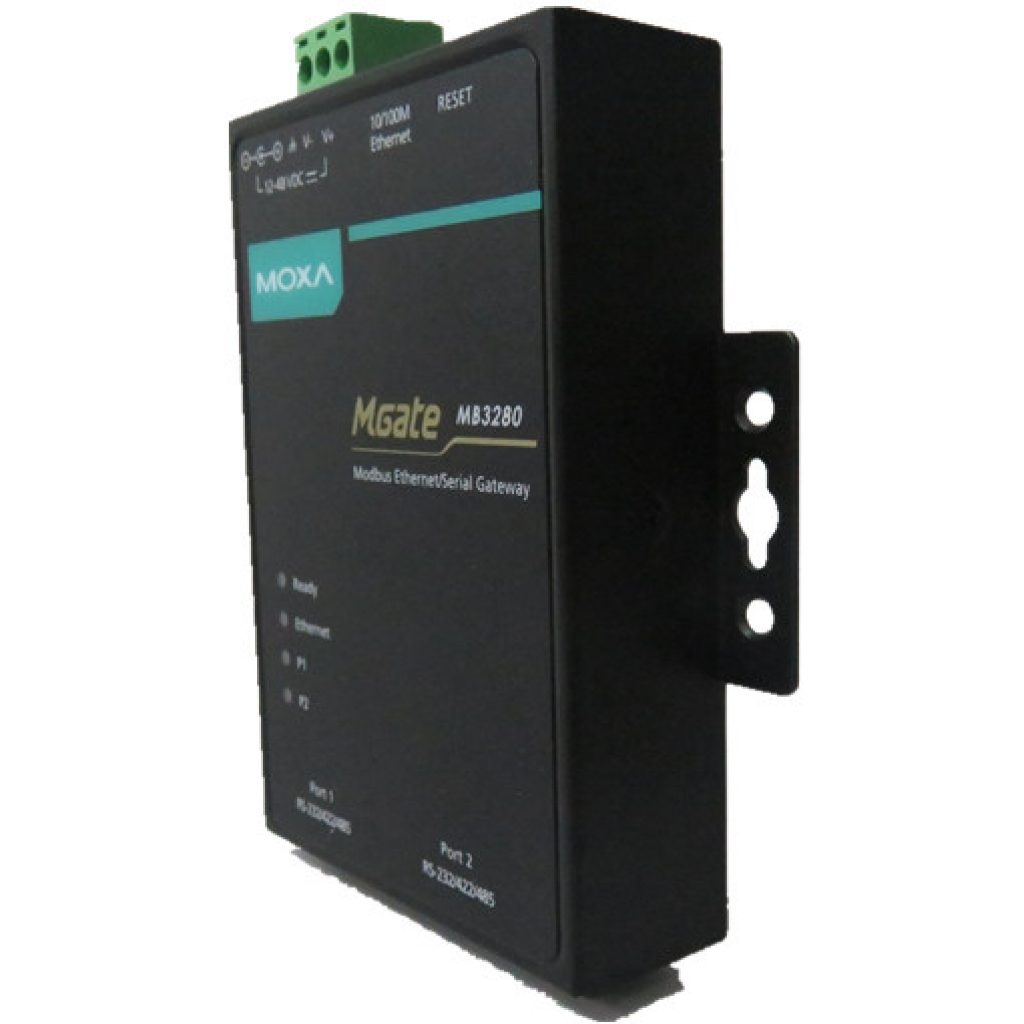
.jpg)
- #MODBUS SERVER TCP SERIAL MOXA DRIVER#
- #MODBUS SERVER TCP SERIAL MOXA SERIES#
- #MODBUS SERVER TCP SERIAL MOXA WINDOWS#
IEEE 802.3u for 100BaseT(X) and 100BaseFX
.jpg)
#MODBUS SERVER TCP SERIAL MOXA SERIES#
The format is X.The Green Core Product Identity of the EDS series will be phased in starting May 1, 2014. When you configure Ignition tags that pull Modbus register information from any of the Modbus RTU devices connected to the MGate unit, you will need to specify the Modbus RTU Address, Modbus Data Type and Modbus Register Address by appending to the OPC Server Path in the OPC Item Path. Now we can start to add OPC tags under each PLC folder and associate with the appropriate Modbus PLC and Register. In Ignition Designer, create a tag tree under your required Tag Provider for each of the CLICK Modbus PLCs. Setting up the Ignition Tags and associating with Modbus PLC and registers Once you save the configuration for the Modbus TCP connection and everything is setup properly on the MGate you should see the “ Status” of the connection change to “ Connected”. This will display the Modbus TCP configuration page.
#MODBUS SERVER TCP SERIAL MOXA DRIVER#
and select the “Modbus TCP” driver from the list of protocols: In Ignition, from the left hand menu bar, select Config > OPC UA > Device Connections > Create new Device. When setting up a network like this that we will only setup a single Modbus TCP Device Connection to talk to all three (3) of the Modbus RTU slave devices connected to the MGate. Now that the MGate unit is setup and providing a Modbus TCP to Modbus RTU RS-485 multi-drop serial network, we’ll proceed to setting up the Modbus TCP driver in Ignition to take advantage of this network. Once the configuration steps have been completed, the resulting network topology is shown below:Ĭonfiguring the Ignition Modbus TCP Driver For other MGate units with multiple serial ports this would inform the MGate which serial port to use for associated Modbus RTU slave device addresses. For this example, we’re using an MGate MB3180 which only has a single serial port, so the routing is simple.

This informs the MGate which serial port to use for a range of Modbus RTU slave device addresses. The last item to configure on the MGate is the Modbus Routing. Setup the Modbus Parameters as shown below: This includes the Initial Delay, the TCP Port number that Modbus TCP will be listening on, the Response Time-out of any Modbus RTU slave devices attached to the MGate, and the Inter-character Time-out and Inter-frame Delay. The next step is to configure the Modbus TCP parameters of the MGate. The baud rate is set to 19200 baud with no parity, 8 data bits, and 1 stop bit. This tutorial is focused on the physical setup of a RS-485 2 wire serial network with 3 CLICK Modbus RTU devices all on the RS-485 network.
.jpg)
That will result in the following web page being displayed:Īfter you enter the default admin/moxa credentials you will be prompted to enter a new password. Once you have done that, open a web browser and browse to. Temporarily set your computer’s Ethernet domain to the domain. Out of the box the MGate will have the following default TCP/IP address and default Account and Passwords: But the MGate also provides a native web UI that provides the same functionality from any operating system.
#MODBUS SERVER TCP SERIAL MOXA WINDOWS#
Moxa provide a Windows based utility that can be used to connect to the MGate and aid in configuring the unit. MGate Configuration Initial Configuration Access The gateway uses male DB9 serial ports to connect to the Modbus RTU or ASCII devices.Įach port supports three serial interfaces: RS-232, RS-422 and RS-485 (both 2 and 4 wire) with the pinout shown below: The image below shows an example of how Modbus RTU Devices would be connected through the Moxa gateway. For assistance with the Moxa Gateway, please contact Moxa Support and for assistance with the Modbus TCP Driver/OPC tags, please contact Inductive Automation. CirrusLink provides this tutorial for information only.


 0 kommentar(er)
0 kommentar(er)
